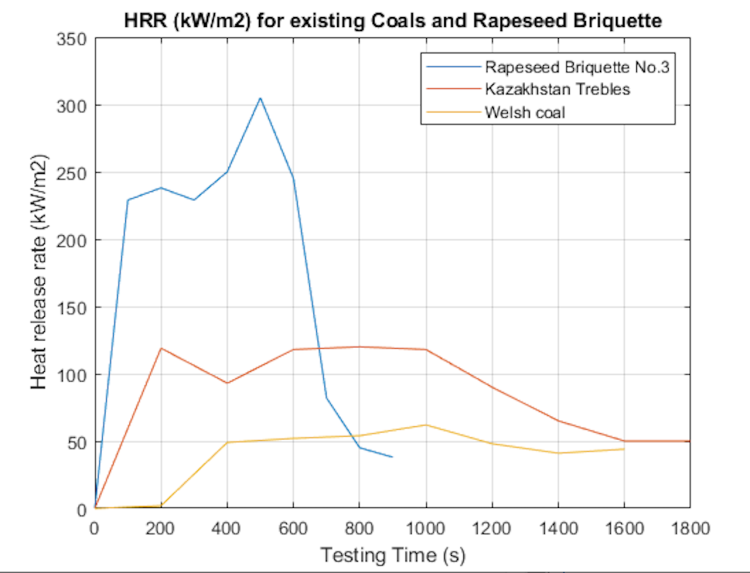An innovative approach to sustainable fuel for steam locomotives is well underway with in-field testing proving very successful
Kirkby Stephen East in South Cumbria is a historic station of the North Eastern Railway and boasts a fascinating history regarding the use of renewable energy with a hydroelectric plant providing power for the station and shed from as early as 1911.
In keeping with this impressive energy approach from the past, the last six months have seen researchers of the John Tyndall Institute at the University of Central Lancashire alongside Stainmore Railway Company and the Locomotive Conservation and Learning Trust working together in order to build a green ethos akin to that of the past.
The project is driven by the increasing price of coal which has seen an astronomical rise of 148% in just a nine-week period earlier in 2022. Ffos-y-fran coal currently costs £580 per tonne and alongside license agreement for coal extraction coming to an end, this November means that the situation for coal is not likely to improve in the near future.
A number of suppliers have attempted to create alternative fuels for use in steam locomotives however these have been lacking scientific backing and have even seen poor product development lead to the unintentional damage of locomotives.
At present the most successful product development of ‘rapeseed briquettes' which have been created by Phoenix Speciality Oils Ltd from Nottingham. This alternative approach to fuel has seen many positives including the ability for the product to be entirely sourced within the UK. This innovative and sustainable solution could well support the future of the Heritage Railway sector and has been indicated via preliminary laboratory results which reveal that the bio-fuel which is still under development has the prospects to provide an alternative to coal.
The ‘rapeseed briquette' sees a total heat release close to that of coal with the bio-fuel burning approximately twice as hot but for half the time. The impressive fuel also sees a cut of around 50% in carbon monoxide and 10% in carbon dioxide emissions.

The project is currently in the process of securing funding via the joint Innovate UK/KTN, Accelerated Knowledge Transfer scheme in order to take its development further with an aim of creating a fully viable coal substitute.
Laboratory testing rightly so, would not provide evidence enough to convince the entire heritage rail sector and for this reason, further testing is being undertaken in the field at Stainmore Railway Company under the support of JTi and the Locomotive Conservation and Learning Trust.
This testing has seen Stainmore Railway Company as the very first standard gauge railway in the country to operate a public steam service using a 100% renewable fuel – something which could only have been dreamed of just 12 months before!
Peckett 0-4-0ST No. 2111 ‘Lytham St. Annes' is the star of the show and will be used for the entire pioneering process. In order to create a fair testing comparison, the performance of the locomotive was monitored for 14 days previously using Kazakhstan Trebles before moving on to the briquettes. Each of the days testing saw exactly the same schedule and trainset (Gresley BTK 3669 + Mk1 TSO 5049).
Working with the rapeseed briquettes saw pressure maintained and easily managed the half-hourly schedule with a near identical appearance and behaviour in smoke as to hard coal. A further unexpected positive from the testing was a number of passengers who said that the briquettes smelt nicer than the coal.
The briquettes have been successful over a running day, however, they are not yet at a point where they could be transitioned for coal and would require further trials to be carried out at Stainmore Railway Company alongside extensive in-field testing at an array of railways across differing gauges. The next steps will see running trials carried out on a bigger locomotive using the much bigger firebox of Peckett OY1-S No.2084 'F.C.Tingey' also based at Kirkby Stephen East.
Both Stainmore Railway Company and Kirklees Light Railway have acknowledged the fuel as being successful. If the bid with Innovate-UK/KTN to further develop the product is successful it is hoped that it will be available on the market by the end of 2023 and will bare a closer likeness to hard coal.
This impressive and game-changing project has seen a collaborative effort between Stainmore Railway Company, Locomotive Conservation and Learning Trust, Phoenix Specialty Oils Ltd and the John Tyndall Institute (based at UCLan).
If you would like to help the Stainmore Railway Company, why not become a volunteer – find out more information here: https://www.kirkbystepheneast.co.uk/volunteering-with-src.html
good idea
No mention of the potential COST in hard cash!
Hi John, the aim is to get it on a price/ton similar to coal